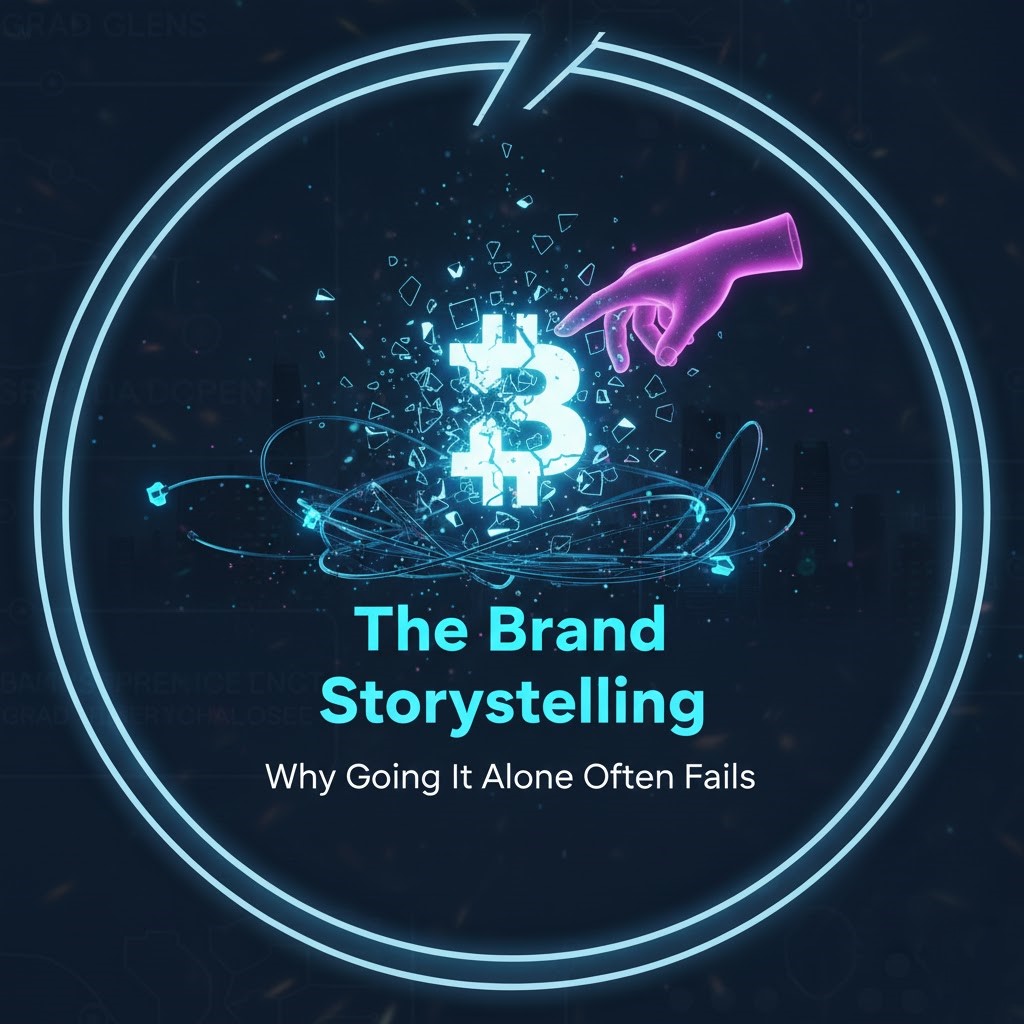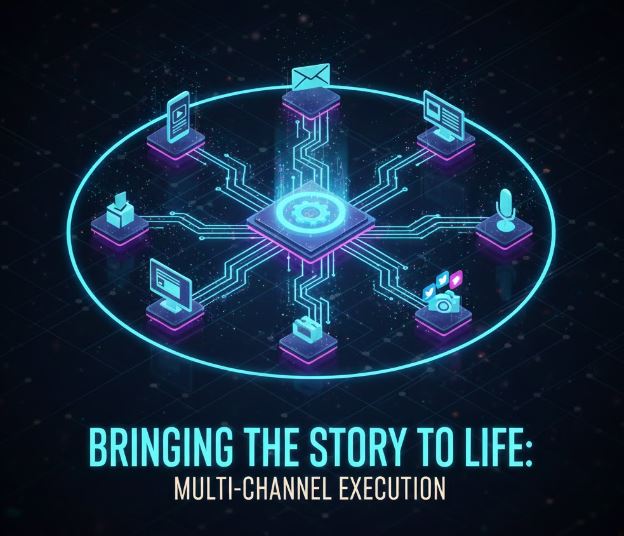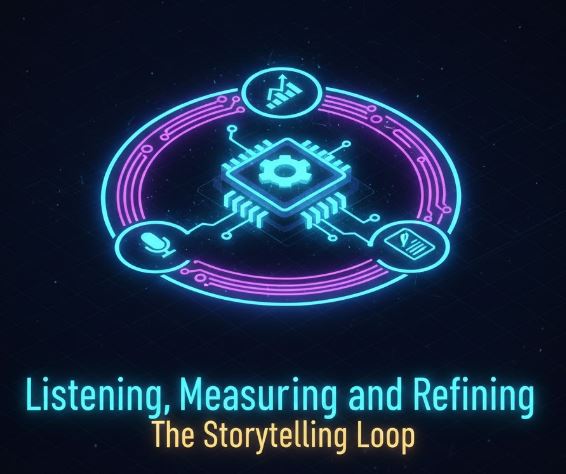In today’s saturated digital landscape, every brand is shouting for attention. They have products, services, and features, but consumers are no longer buying what you do; they are buying why you do it. They are buying the story, the values, and the emotional connection. This is where the magic of a specialized agency comes into play. But how do agencies help brands tell their story in a way that cuts through the noise and forges lasting relationships?
It’s a common misconception that an agency’s primary role is to just create ads or manage social media feeds. In reality, their most profound work is that of a modern-day alchemist and architect. They transform a brand’s raw essence—its mission, values, and audience—into a compelling, cohesive, and strategic narrative that resonates across every single touchpoint. This article will deconstruct the multi-layered process of how agencies become the essential partners in narrative building, moving far beyond simple marketing tactics to foundational storytelling.

The Brand Storytelling Dilemma: Why Going It Alone Often Fails
Many brands, especially passionate founders, believe no one can tell their story better than they can. This is true in spirit, but often flawed in execution. The internal team is often too close to the product, mired in day-to-day operations, and lacks the objective, specialized skill set required to structure that story for maximum external impact.
They often struggle with:
- The Curse of Knowledge: Knowing too much about their own product, making it difficult to explain it simply and compellingly to an outsider.
- A Disconnected Narrative: Inconsistent messaging across marketing, sales, and customer service, leading to brand confusion.
- Tactical Myopia: Focusing on individual campaigns or posts without an overarching narrative thread that ties everything together.
- Resource Constraints: Lacking the time, tools, or specific expertise in narrative psychology, data analysis, and multi-channel distribution.
This is precisely how agencies help brands tell their story—by solving these core dilemmas. They provide the outside perspective, the strategic framework, and the creative firepower to build a story that is not only heard but felt and remembered.
The Agency Blueprint: A Step-by-Step Guide to Narrative Building
So, what does this process actually look like? Let’s break down the key stages of how agencies help brands tell their story, from the foundational deep dive to the final execution.
1. The Archeological Dig: Unearthing the Core Brand Identity
Before a single word of the story is written, the agency acts as an archaeologist, excavating the brand’s true soul. This goes far beyond a mission statement.
- Stakeholder Interviews: They conduct in-depth conversations with founders, executives, and employees to uncover the brand’s origin story, its core beliefs, and its ambitions.
- Audience Deep-Dive: Using market research, surveys, and data analytics, they build detailed buyer personas. They don’t just define demographics; they uncover psychographics—their fears, aspirations, values, and the media they consume.
- Competitive Landscape Analysis: They map out the narratives competitors are using to identify a unique and ownable space for their client’s story.
The outcome of this phase is a crystal-clear understanding of three things: the brand’s authentic why, the audience’s deepest needs, and the competitive white space. This trifecta forms the bedrock of the entire narrative.

2. Architecting the Narrative Framework: The Story Strategy
With the core elements identified, the agency now becomes a strategic architect. They build the framework upon which all future content will be built. This is where the abstract becomes tangible.
- Crafting the Core Narrative: This is the central, unifying story of the brand. It’s not a tagline, but a foundational document that articulates the brand’s journey, its role in the customer’s life, and the world it aims to create. It’s the “once upon a time” for the entire organization.
- Developing Messaging Pillars: The core narrative is then broken down into 3-5 key messaging pillars. These are the essential themes that will be consistently communicated (e.g., Innovation, Sustainability, Community Empowerment).
- Defining Brand Voice & Personality: Is the brand a wise mentor, an optimistic friend, a rebellious innovator? The agency gives the brand a distinct personality and a tone of voice guide to ensure it “sounds” the same everywhere.
This framework ensures that whether a customer encounters the brand on a billboard, a blog post, or a customer service call, the story feels consistent and authentic.

3. Bringing the Story to Life: Multi-Channel Execution
This is the most visible phase of the work, where the strategy is translated into stunning creative execution. Agencies have cross-functional teams of experts who understand the unique language of each platform.
- Visual Storytelling: Graphic designers, art directors, and videographers translate the narrative into a compelling visual identity. The color palette, typography, and imagery are all chosen to evoke specific emotions that support the story.
- Content Creation: Copywriters and content strategists craft everything from website copy and blog articles to social media posts and video scripts, all infused with the brand’s voice and aligned with its messaging pillars.
- Strategic Distribution: The agency doesn’t just create content; they ensure it reaches the right audience on the right platforms at the right time. They use paid media, SEO, PR, and email marketing to amplify the story strategically.
This is a critical part of how agencies help brands tell their story—they ensure the narrative isn’t confined to a PDF document but is living, breathing, and interacting with the world.

4. Listening, Measuring, and Refining: The Storytelling Loop
A great story is not static; it evolves. Agencies close the loop by using data and analytics to measure the story’s impact and refine it over time.
- Performance Tracking: They monitor key metrics like engagement rates, website traffic, brand sentiment, and conversion rates to see what parts of the narrative are resonating.
- Active Listening: They use social listening tools to understand how the audience is talking about the brand and receiving the story in real-time.
- Iterative Optimization: Based on these insights, they continuously tweak the messaging, creative, and distribution strategy. They understand that storytelling is a dialogue, not a monologue.
The Tangible Results: What a Powerful Brand Story Delivers
When an agency successfully helps a brand tell its story, the benefits are profound and measurable. It’s not just about “good marketing”; it’s about building a stronger business.
- Deepened Customer Loyalty: People don’t feel loyal to a product; they feel loyal to a shared belief and a story they see themselves in. This transforms customers into a passionate community.
- Commanding Premium Pricing: A brand with a powerful story is no longer a commodity. It has an emotional value that allows it to justify higher prices (think Apple or Patagonia).
- Enhanced Brand Recall: A cohesive and emotionally engaging story is far more memorable than a list of features, ensuring the brand stays top-of-mind.
- Crisis Resilience: A brand with a strong, authentic narrative and a loyal community has a stronger foundation of trust to weather inevitable challenges.
Conclusion: The Agency as a Strategic Storytelling Partner
So, how do agencies help brands tell their story? They act as the objective excavator, the strategic architect, the creative artisan, and the data-driven scientist. They provide the discipline, expertise, and outside perspective necessary to transform a brand’s internal passion into an external, magnetic narrative.
In the end, a brand is simply a story that lives in the minds of its customers. The role of the agency is to be the expert author, the careful editor, and the strategic publisher of that story. They ensure it is not just told, but believed, shared, and cherished. For any brand looking to move beyond transactions and build a legacy, the question is not if they need a story, but whether they have the right partner to help them tell it in a way that truly matters.
👉 Book a Consultation Call
Feeling unsure where to start? You don’t have to figure it out alone.
Our Brand Storytelling Consultation Call is designed to help women entrepreneurs:
- Find clarity in their message
- Build an authentic and consistent brand story
- Learn how to attract their ideal audience through storytelling
During your consultation, we’ll explore your business goals, identify what’s holding your brand back, and create a personalized storytelling roadmap.
Let’s bring your brand story to life — with confidence, clarity, and creativity.
Your Story Deserves to Be Heard
Every woman entrepreneur has a unique story worth sharing. With the right strategy and emotional connection, your story can become your most powerful business tool.
At Brand Storytelling Experience, we’re here to help you craft that story — to connect, inspire, and grow your brand authentically.
Your journey starts with one conversation.
💬 Book your consultation today and take the first step toward your most confident, creative, and connected brand story.

